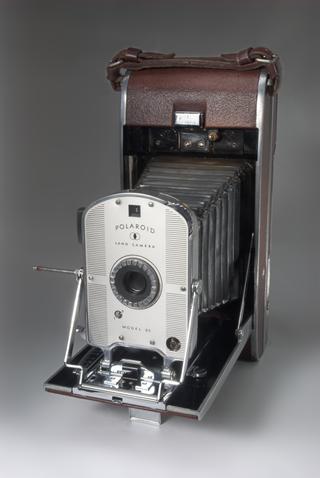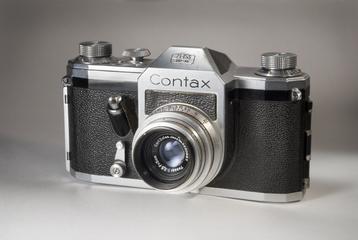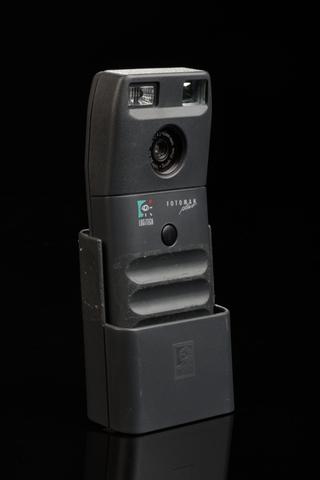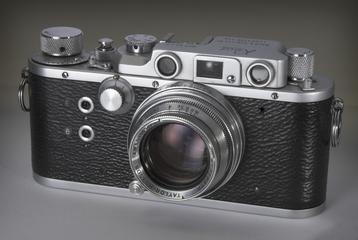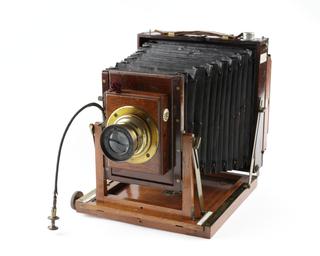
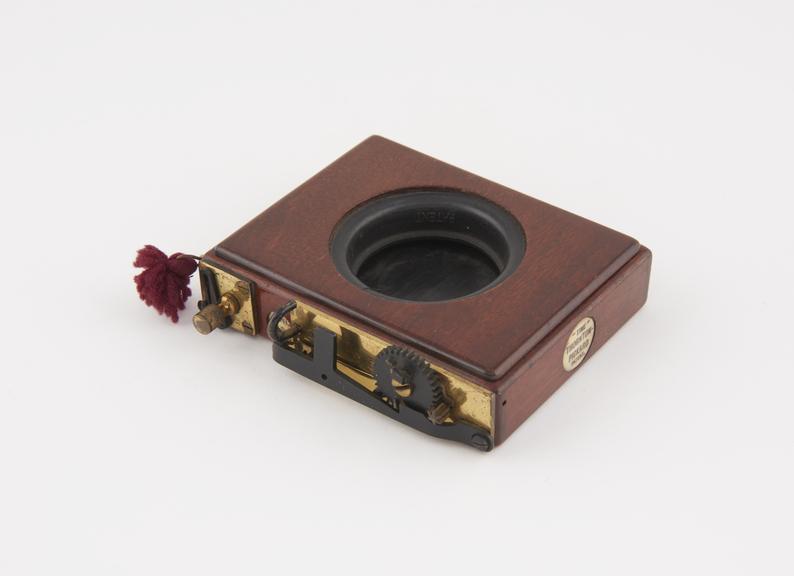
Thornton Pickard roller-blind camera shutter.
The roller blind shutter was an early type of mechanical camera shutter.
Early cameras took so long to take photographs that they had no need for a shutter to uncover the camera lens and close it again. Instead, the photographer simply removed the camera’s lens cap by hand, counted the time, then replaced the cap when they thought the photographic plate had been exposed to enough light to make an image. Taking images that were neither too bright nor too dark was a matter of skill, and the long exposure times meant it was difficult to take images of moving objects without them blurring.
In the later 19th century, the development of more sensitive photographic chemicals meant that photographic plates only needed to be exposed to light for a fraction of a second to take a photograph, but some sort of mechanical shutter was needed to quickly open and shut the camera lens.
The roller blind shutter was an early solution to this problem. Inside was a rolled up strip of light-proof fabric, like a roller blind, with a hole in the middle. The shutter was fitted to the front of the camera over the lens, with the roller blind blocking the light. Triggering the shutter quickly pulled the fabric strip across the lens of the camera, briefly letting in light to expose the photograph when the hole passed in front of the lens, before covering it up again. The constant speed of the shutter helped photographers to take photographs more reliably, and its fast speed allowed sharper images of moving objects.
This particular shutter was manufactured by Thornton-Pickard, a company established in Manchester by John Thornton and Edgar Pickard in 1888. Thornton-Pickard’s roller blind shutters were well made and the length of the exposure could be varied by changing the tension of the roller spring. John Thornton first patented his design for a roller blind shutter in 1886 and they became quite popular, with Thornton-Pickard claiming to have sold 12,000 of them in the first few years of production. Shutters were an important part of Thornton-Pickard’s business at first, but the company gradually focussed their efforts on producing cameras, until its demise in 1939.
Details
- Category:
- Photographic Technology
- Object Number:
- Y4000.60
- Materials:
- wood (unidentified), brass (copper, zinc alloy), metal (unknown) and fibre (unidentified)
- Measurements:
-
overall: 27 mm x 105 mm x 97 mm,
- type:
- shutter
- credit:
- Gift of J.T. Chapman Limited
